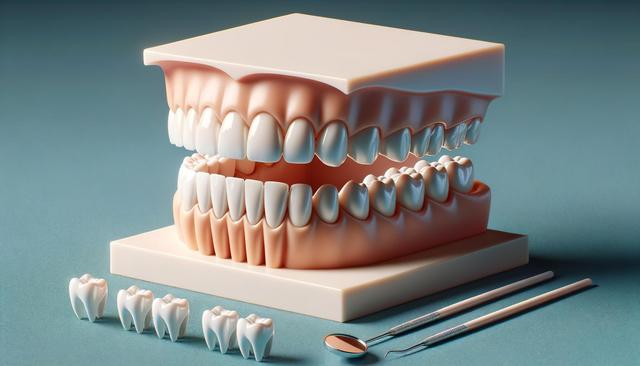
Overbite Braces Treatment
Understanding Overbite and Gap Teeth
Overbite and gap teeth, while separate dental issues, often coexist or present simultaneously in patients. An overbite occurs when the upper front teeth excessively overlap the lower front teeth, while gap teeth, also known as diastema, describe spaces between two or more teeth. These conditions can be caused by a variety of factors, including genetics, childhood habits (like thumb-sucking), or developmental issues in the jaw and teeth alignment. Many individuals with either or both of these conditions may experience discomfort, difficulty with oral hygiene, or self-consciousness about their smile.
Overbite braces treatment is a widely recognized approach to correcting an overbite and can also be effective in closing dental gaps. Braces work by gradually shifting the position of teeth using consistent pressure over time. This not only improves the alignment but also enhances oral function and aesthetics. Understanding the specific nature of your dental structure is key to determining the most suitable treatment approach.
The Role of Braces in Treating Overbite
Braces are commonly used to treat overbite by moving the teeth and sometimes the jaw into a more optimal position. The process generally begins with a thorough orthodontic evaluation, where dental impressions, photographs, and X-rays are taken to assess the extent of the overbite. Based on this evaluation, an orthodontist will develop a treatment plan tailored to the individual’s needs.
Overbite braces treatment may involve:
- Traditional metal brackets and wires
- Ceramic braces that blend with the natural tooth color
- Clear aligners designed for mild to moderate overbites
The treatment duration can vary depending on the severity of the overbite and the specific method used but generally ranges from 12 to 36 months. During this time, periodic adjustments are made to ensure the teeth are moving as planned. This consistent pressure helps to realign both the teeth and the underlying bone structure, ultimately correcting the overbite.
Addressing Gap Teeth with Orthodontics
Gap teeth can be a result of various factors, including missing teeth, undersized teeth, or an oversized labial frenum (the tissue connecting the upper lip to the gums). While small gaps may not pose functional issues, larger or multiple gaps can lead to bite problems, speech difficulties, or increased risk of gum disease due to food trapping.
Orthodontic treatment for gap teeth typically involves the use of braces or aligners to gradually close the spaces between teeth. The approach depends on the cause and size of the gaps. Braces work by applying gentle pressure to move the teeth closer together. In some cases, additional procedures like frenectomy (removal of the labial frenum) or the use of dental bonding may be recommended in conjunction with braces.
Benefits of closing dental gaps include:
- Improved bite and chewing function
- Enhanced facial symmetry and smile aesthetics
- Reduced risk of gum problems and cavities
Combining overbite braces treatment with gap closure strategies can lead to a more comprehensive alignment and better overall oral health.
Combined Treatment Approaches
When overbite and gap teeth are present together, a combined orthodontic treatment plan is often the most effective solution. Each case is unique, and the orthodontist must consider how one condition influences the other. For example, correcting the overbite might naturally help reduce the size of the gaps, or vice versa.
A typical combined treatment plan might include:
- Initial alignment using braces or aligners to reposition the teeth
- Targeted appliances to correct jaw positioning, if needed
- Retention phase with retainers to maintain results after active treatment
Throughout the treatment, regular check-ups are essential to monitor progress and make necessary adjustments. Patient cooperation, such as wearing elastics or aligners as instructed, plays a significant role in the success of the treatment. While the process requires time and commitment, the results often lead to improved dental function, aesthetics, and long-term oral health.
Maintaining Results After Treatment
After completing overbite braces treatment and closing any dental gaps, maintaining the results becomes the next priority. Teeth naturally tend to shift back to their original positions, especially shortly after braces are removed. To prevent relapse, orthodontists typically recommend wearing retainers, which help keep the teeth in their new alignment.
There are different types of retainers, including:
- Removable retainers made of clear plastic or acrylic
- Fixed retainers attached to the back of the teeth
Good oral hygiene habits are also essential during and after orthodontic treatment. This includes brushing twice daily, flossing regularly, and visiting the dentist for routine cleanings and checkups. Patients should also be mindful of habits that can negatively impact their dental alignment, such as nail-biting or chewing hard objects.
Long-term care and follow-up appointments ensure that any minor shifts are addressed promptly, preserving the outcome of the treatment. With proper maintenance, the improvements from overbite and gap teeth treatment can last a lifetime, contributing to a healthier and more confident smile.
Conclusion: Achieving a Balanced and Healthy Smile
Addressing both overbite and gap teeth through orthodontic solutions like braces can significantly enhance both dental function and appearance. While overbite braces treatment is a common and effective method, it often requires a tailored plan to meet individual needs, especially when combined with gap correction. By understanding the causes, treatment options, and maintenance strategies involved, individuals can make informed decisions about their oral health. Consulting with an orthodontic professional is the first step toward achieving a more balanced, aligned, and confident smile.